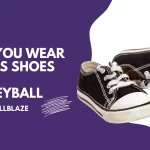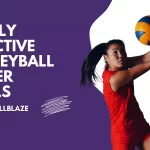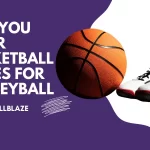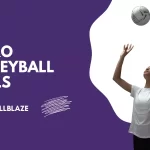Every player contributes to the success of the team in volleyball. It’s important to know What Volleyball Position Should I Play?
In fact, it is one of the best ways to discover oneself. We’ll go over how to choose a position that reflects your strengths, attributes, and career goals.
Which Volleyball Position Should I Play?
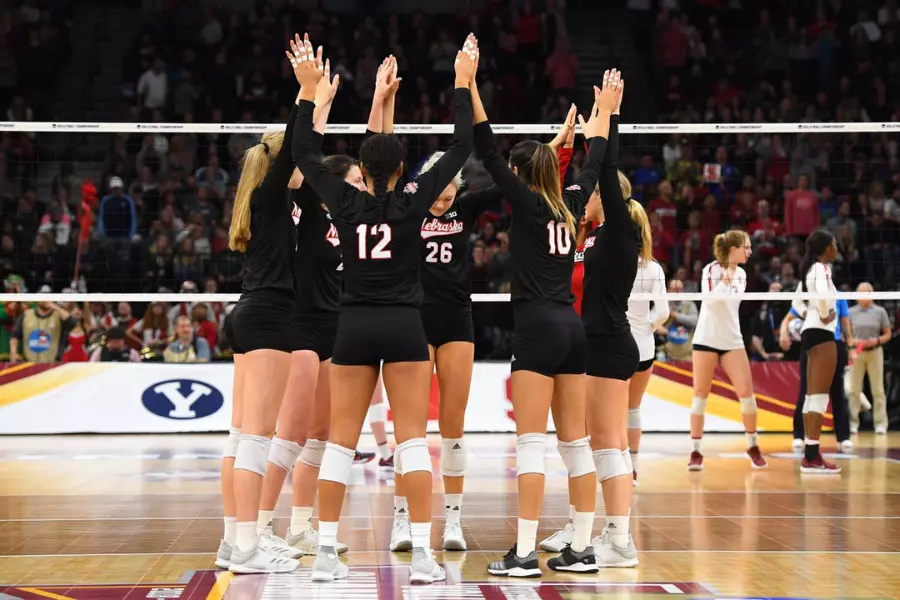
Is it a constant question in your mind what volleyball position should I play? Your physique, skills, and preferences are all taken into consideration. Taking a look at each position’s requirements and characteristics can help you decide which is right for you.
You may enjoy reading How Tall Are Middle Blockers In Volleyball?
Each position’s requirements and characteristics
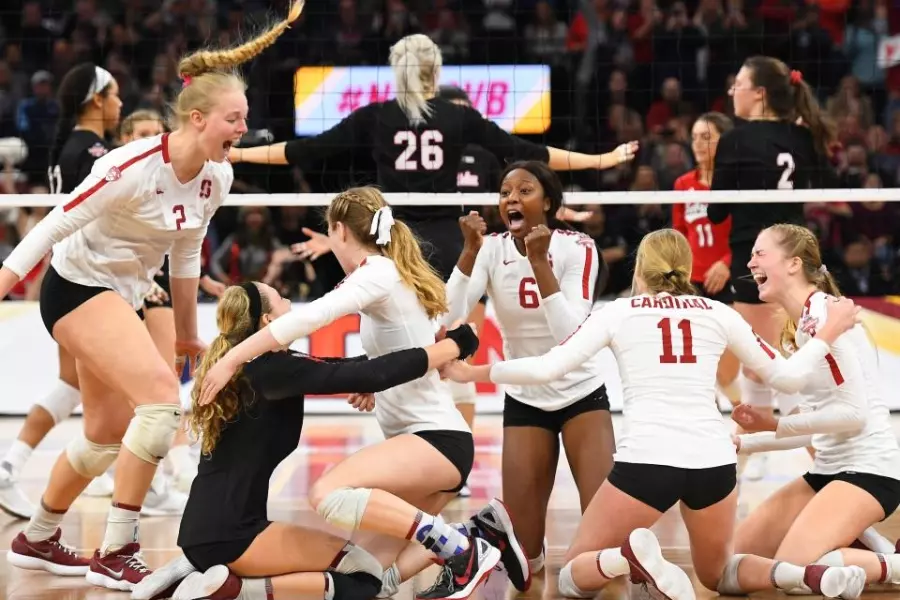
Setter:
As a volleyball team’s quarterback, the setter plays a vital role. Players who touch the ball most often orchestrate the offense by delivering precise sets to hitters. Setter is a position that suits those who possess excellent hand-eye coordination, quick decision-making skills, and strategic thinking.
Libero:
It is the libero’s job to receive the ball and dig it up for the team. Each team wears a different colored jersey and has its own substitution rules. This position may be perfect for you if you enjoy reading opponents’ hits, are extremely agile, and love playing defense.
Defensive Specialist:
Defenders specialize in digging and passing, just like liberos. When back-row players are not available, they step in to enhance defensive capabilities. A defensive specialist position could be a good fit for you if you are agile, possess excellent ball control skills, and enjoy the thrill of keeping the ball alive.
Middle (Blocker/Hitter):
Both offense and defense rely heavily on middle blockers. In addition to blocking opponents’ attacks, they have the ability to execute quick hits. The middle position may be your playground if you have a strong vertical jump and quick reflexes.
Outside Hitter (Left):
The outside hitter is often the primary attacker, receiving sets from the setter. For the team to score points, power, accuracy, and finesse must all be combined. The outside hitter position might be right for you if you enjoy being in the spotlight as well as having a strong arm and the ability to adapt to different hitting angles.
Opposite Hitter (Right):
Another key attacker is the opposing hitter, who is often positioned on the right side of the net. Providing a different angle of attack, they are essential to diversifying the offense of the team.
Become an opposite hitter if you are an all-around hitter who can adapt to different sets and enjoy being versatile.
Consider versatility and adaptability as you examine each position. It is important to discover how your skills align with the needs of your team in order to find the right position.
You may enjoy reading Volleyball Setter Drills
Your height should determine your position
Depending on your height, you can be placed in the most suitable position on the court in volleyball. Which volleyball position should I play, whether I’m tall or short?
The most important thing to remember is that volleyball is a sport where diverse skills are valued, so height does not have to determine your position.
You contribute to the success of your team no matter how tall or short you are. No matter your height, you will be able to excel in the following positions.
Best Volleyball Position for Short Players
It is not uncommon for short players to enjoy an advantage in some aspects of the game, such as agility, speed, and exceptional ball control. Players who are shorter may find the following positions well-suited to their abilities:
- Libero: Due to their agility and defensive skills, shorter players would make excellent liberos. For a team’s defensive effort, liberos are crucial, since they serve, dig, and pass.
- Defensive Specialist: Defense specialists are excellent diggers and passers, just like liberos. In the back row, they can be valuable assets if they can read opponents’ hits and react quickly to the ball.
- Outside Hitter (Left): By using their speed and agility to navigate around blockers, shorter players can excel as outside hitters. Your role as an outside hitter will require you to be able to attack dynamically and pass reliably.
Best Volleyball Position for Tall Players
As a result of their height, tall players are more likely to reach higher over the net. Their ability to block and hit is enhanced as a result of it. The following positions might be particularly suitable for tall players:
- Middle Blocker: Tall players make excellent middle blockers because of their height and jumping ability. Assisting in blocking and attacking quickly is the responsibility of these players.
- Opposite Hitter (Right): Players with tall statures are often excellent opposite hitters, as they can deliver powerful attacks from their right side of the court. Their height enables them to take advantage of strategic angles and hit over the block.
- Setter: Hitting opportunities are better for taller setters because they can set above the net. Height allows them to make quick, accurate sets that can surprise their opponents.
You may enjoy reading Libero Volleyball Drills
Tips for Each Position
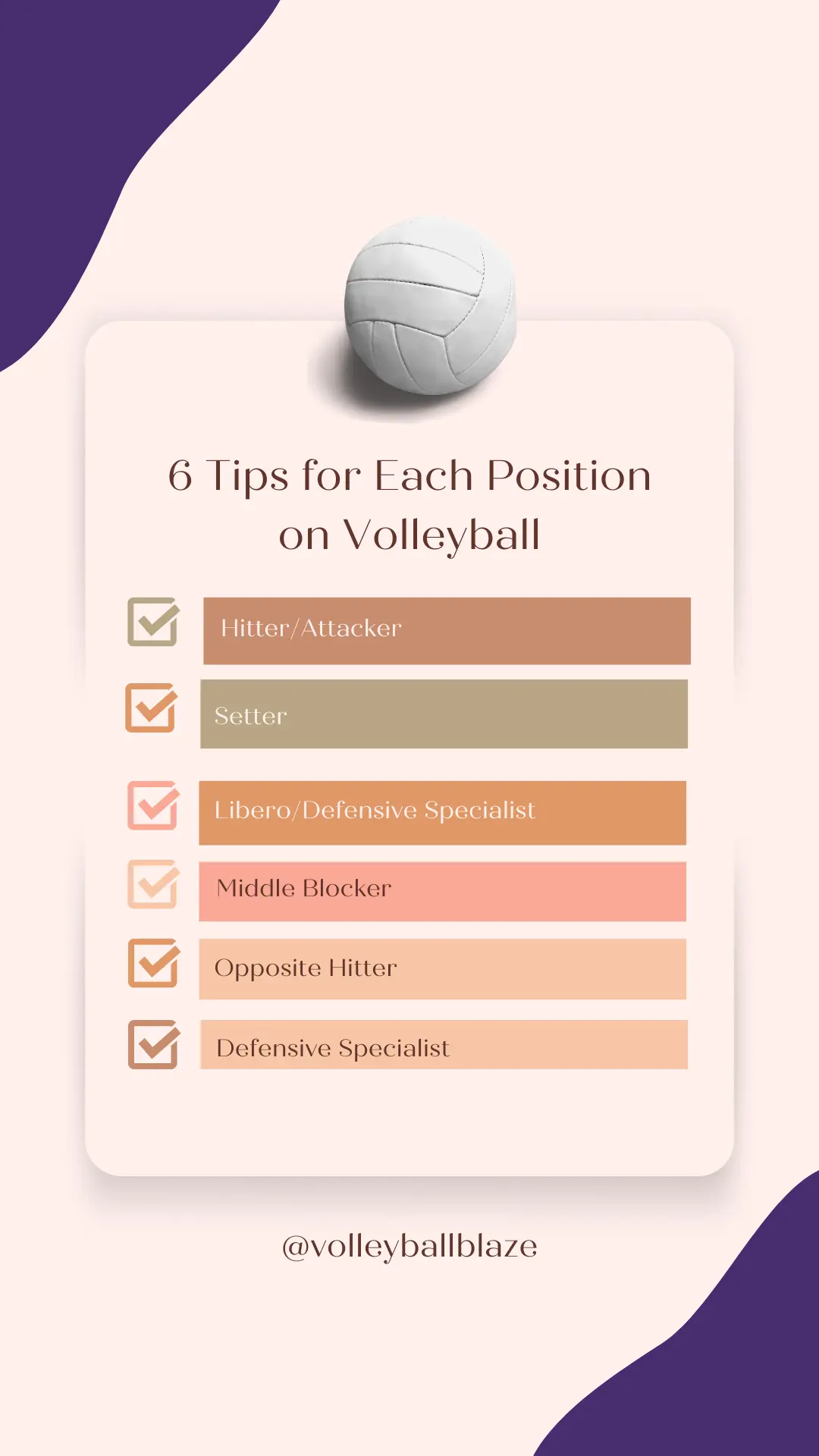
Hitter/Attacker
The hitting and jumping techniques of hitters should be developed so that they can generate explosive power. To become unpredictable against opponents, practice a variety of shots, such as cross-court and line hits.
Setter
Become more coordinated and communicate more effectively with your teammates as a setter. To keep the defense guessing, work on setting from different angles and positions.
Libero/Defensive Specialist
Passing and defensive skills should be improved by liberos. Master diving and rolling techniques as well as reading your opponent’s attacks.
Middle Blocker
The footwork and reaction time of middle blockers need to be improved. Stay disciplined during attacks by your opponents and practice closing blocks.
Opposite Hitter
It is important for opposing hitters to become versatile attackers. Practice hitting from a variety of court positions to develop your skills.
Defensive Specialist
A defensive specialist must be able to pass consistently and dig consistently. Learn to read hitters’ body language so you can anticipate their shots.
You may enjoy reading How Many Sets Are in a Volleyball Game?
Dominant Hand Position
The dominant hand you use on the volleyball court can have a significant impact on your performance. Continual growth and adaptability are fundamental to volleyball as you consider your dominant hand. You can harness your natural abilities regardless of which hand is your dominant one.
Position for Left-Handed Volleyball Players
A left-handed player brings a unique perspective to the court, which often makes them a surprise to opponents. Left-handed players can take advantage of the following positions:
- Right-Side Hitter (Opposite): Players with left-handed swings can excel at the position of right-side hitter. It can be challenging for blockers to defend against your hitting angle from the right side, giving you an advantage when attacking.
- Setter: It is possible for you to introduce a different dynamic to your game by using a left-handed setting. Setters in volleyball can create strategic opportunities for their teams by creating unpredictable plays.
Position for Right-Handed Volleyball Players
Most teams are made up of right-handed players who are versatile and skilled. Positions where a right-handed player can maximize his or her potential are as follows:
- Outside Hitter (Left): Right-handed players are able to deliver powerful attacks from their left side as outside hitters. By using your dominant hand, you are able to hit the ball effectively and place it precisely.
- Setter: Right-handed setters can set quickly and accurately to take advantage of their teammates’ strengths. It is important for your team’s offense to be able to distribute the ball effectively.
Position based on your skill level

Experience and skill play a key role in your volleyball performance. Now that you’ve answered that question, let’s look at the volleyball positions. The right position is out there for everyone, whether you are a beginner or a seasoned professional.
Position for Beginners
If you’re new to the sport, it’s wise to start with a position that offers a variety of experience:
- Libero: In this position, beginners are encouraged to focus on ball control, passing, and defense as they learn the nuances of the game.
- Defensive Specialist: Beginners can contribute to the defensive efforts of the team and learn how to dig and receive effectively in this position.
Position for Pro Players
A professional player is well versed in the game and has refined skills. Their advanced abilities are catered to in the following positions:
- Outside Hitter (Left): Professional players are capable of executing powerful and strategic attacks.
- Setter: Setters are masters of precision and strategy, leading dynamic plays and calculated sets for the team.
Is Your Volleyball Position Important to You?
There are times when you can feel like your position is really important, but remember that volleyball is the sport you love. Do you really need to play a specific role so much that you’d stop moving forward and up because you’re unwilling to adapt?
You should remember that coaches can sometimes see in you what you can’t see in yourself. They believe they can transform you into a truly great player at that position even though no one has ever seen that side of you before.
You must also learn to play opposite if they are going to take you since they have too many outside hitters. Moving forward requires all the effort you can muster. Switching isn’t something to be resented, so don’t be that athlete who agrees to switch but resents it afterward.
Which Positions Need To Be Able To Jump High?
Who is most likely to benefit from jumping ability?
Due to their shortest height and huge opposite blockers, outside hitters need more bounce than anyone else.
Jumping really high is less important for an outside hitter who is 200cm tall than someone who is 180cm tall, for obvious reasons.
FAQs
Can I switch positions in volleyball?
Yes, you can switch positions in volleyball, especially if you’ve developed skills that are transferable between positions. Players often transition to different roles as they gain experience and discover new strengths.
Can height determine my volleyball position?
Height can play a role in determining your volleyball position, but it’s not the sole factor. Taller players may find success as hitters or blockers, while shorter players can excel as liberos or defensive specialists. However, skills, agility, and volleyball IQ are equally important in deciding the best fit.
Is the Libero position only for defensive players?
While the Libero position is specialized in defense and passing, it doesn’t mean only defensive players can thrive in this role. Liberos need exceptional passing and defensive skills, but they can still contribute to the offense with their precise passes and ball control.
What if I’m good at both setting and hitting?
Being proficient in both setting and hitting is a valuable asset. If you find yourself skilled in both areas, consider becoming a versatile player who can switch between positions as needed. Your ability to set and hit effectively will make you a valuable asset to the team.
How do I deal with disappointment if I don’t get my preferred position?
It’s natural to feel disappointed if you don’t get your preferred position. However, remember that every position is vital, and you can still make a significant impact regardless of where you play. Embrace the challenge, work hard, and use it as an opportunity to grow and excel in your new role.
Conclusion
Your enjoyment and success in volleyball can be greatly impacted by choosing the right position. Consider your volleyball IQ, your skills, and your physical attributes before making a decision. Your volleyball journey will be much more successful if you are adaptable and willing to learn. You should embrace your chosen position, work hard, and most importantly, have fun!
Additionally, you can learn about Aces in Volleyball, Kills in Volleyball, and Volleyball Setter Workouts to improve your game.

